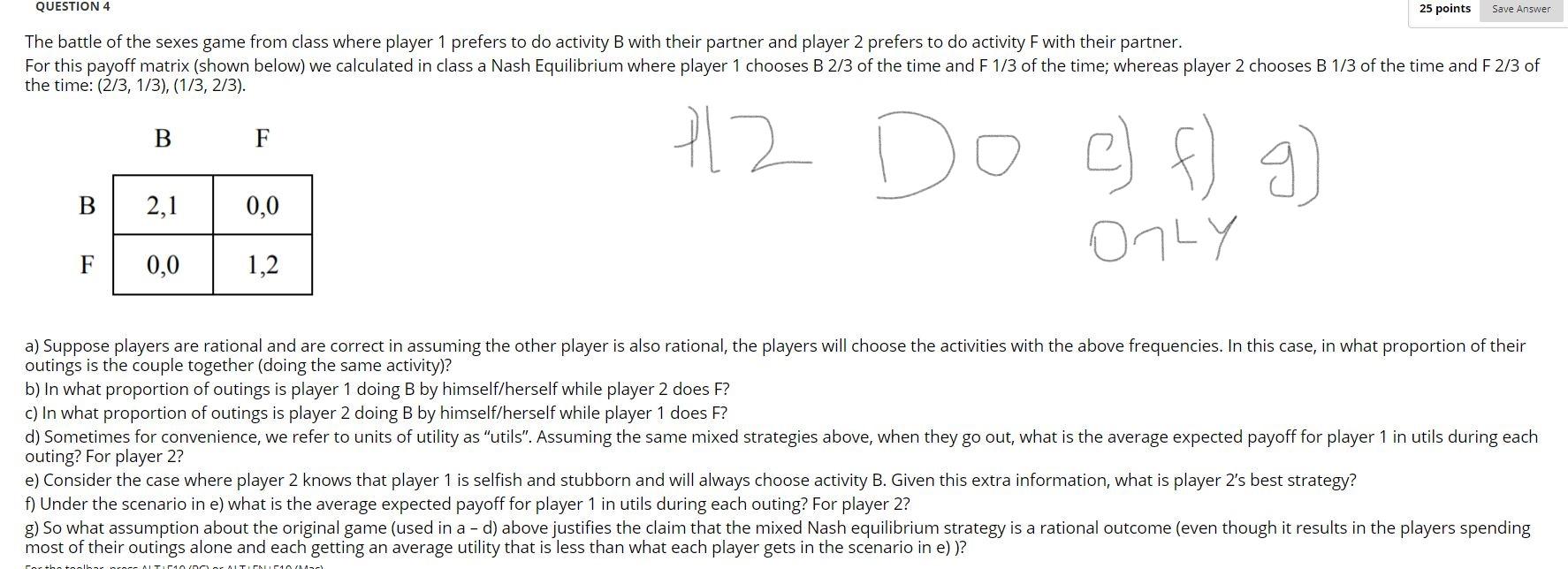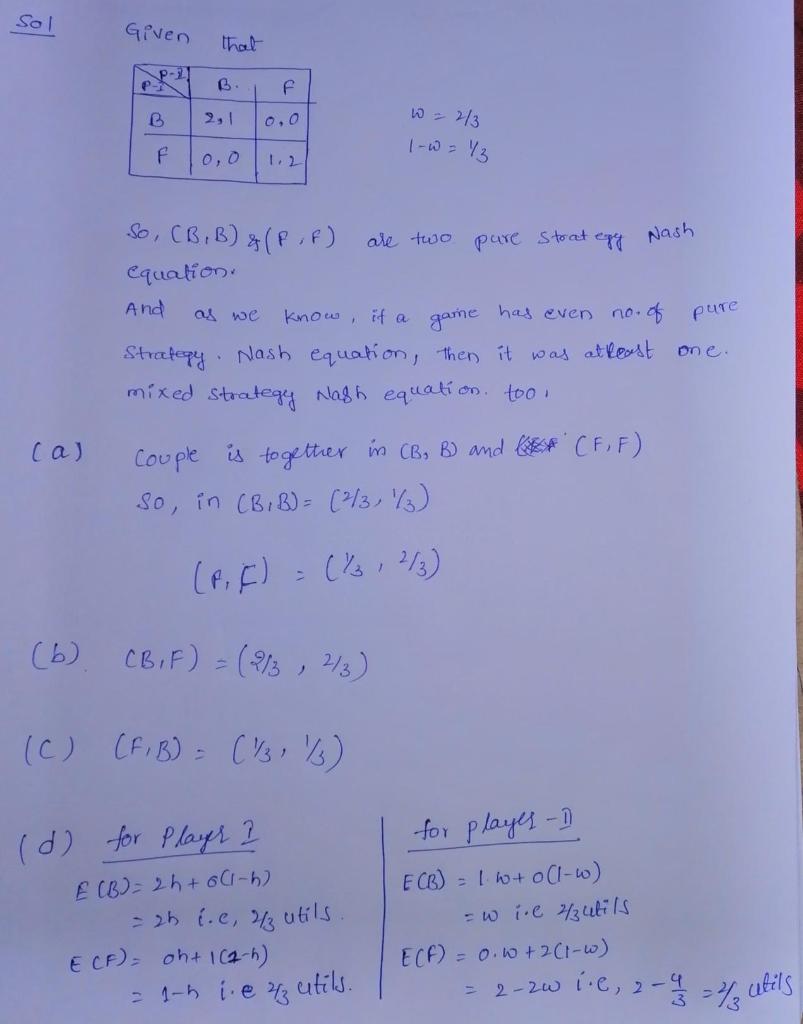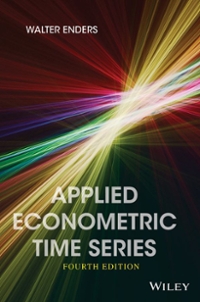

QUESTION 4 25 points Save Answer The battle of the sexes game from class where player 1 prefers to do activity B with their partner and player 2 prefers to do activity F with their partner. For this payoff matrix (shown below) we calculated in class a Nash Equilibrium where player 1 chooses B 2/3 of the time and F 1/3 of the time; whereas player 2 chooses B 1/3 of the time and F 2/3 of the time: (2/3, 1/3), (1/3, 2/3). B F 112 Do e) f) g) B 2,1 0,0 ONLY F 0,0 1,2 a) Suppose players are rational and are correct in assuming the other player is also rational, the players will choose the activities with the above frequencies. In this case, in what proportion of their outings is the couple together (doing the same activity)? b) In what proportion of outings is player 1 doing B by himself/herself while player 2 does F? c) In what proportion of outings is player 2 doing B by himself/herself while player 1 does F? d) Sometimes for convenience, we refer to units of utility as "utils. Assuming the same mixed strategies above, when they go out, what is the average expected payoff for player 1 in utils during each outing? For player 2? e) Consider the case where player 2 knows that player 1 is selfish and stubborn and will always choose activity B. Given this extra information, what is player 2's best strategy? f) Under the scenario in e) what is the average expected payoff for player 1 in utils during each outing? For player 2? g) So what assumption about the original game (used in a - d) above justifies the claim that the mixed Nash equilibrium strategy is a rational outcome (even though it results in the players spending most of their outings alone and each getting an average utility that is less than what each player gets in the scenario in e))? Fort sol Sol Given P-2 P- 6 F B 0,0 > 2/3 1-w=13 F 0,0 Nash So, CB, B) & (PF) are two pure stoat. equation And as we know, it a game has even no. of Strategy Nash equation, then it was at least mixed strategy Nash equation too. pure one. (a) Couple is together in CB, B and CF,F) so in (B, B) = (2/3, 1/3) (6.6) = (1/3,2/3) (6) CB,F) = (21 , 2/3) (C) (F. B) = (1/3, 4) (d) for Player I (B) = 2h+601-6) = 2h i.c, 2 utils ECF) = oht 1 (2-6) = 1-hi.e reutils. for playes - ECB) = 1.6+ (1-0) =wie utils E(F) = 0.0 +2 (1-w) = 2-zwi.e, 2-3-43 utils








